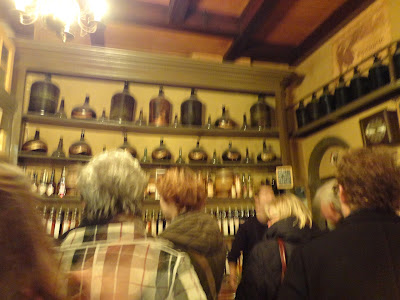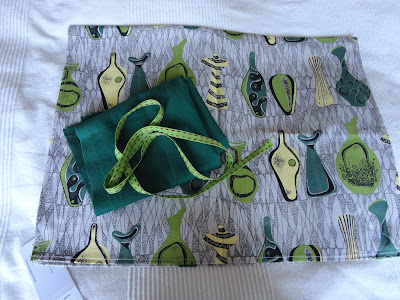 |
Three tables set, ready for 19 people
|
Happy Thanksgiving to everyone who is celebrating it today. In London, there is a choral service at St Paul's Cathedral and many restaurants will have a special Thanksgiving menu today. We, however, celebrated our Thanksgiving on Sunday 18 November. As it is not a national holiday in Britain, we celebrate it on the Sunday before.This has become a tradition in our house and we have done this for more than 20 years. We share it with many friends, who over the years have come to anticipate it as much as we do.
Thanksgiving is not a substitute for Christmas. It is a celebration of survival. It is most American's favourite holiday and more people travel on Thanksgiving weekend than at any other time of the year. They want to be with their family and friends to relax, catch up and enjoy a good meal. There is none of the pressure of Christmas - gifts, trees and decorations. It is just a good meal and a good time to get together.
The story of Thanksgiving is that the Pilgrim fathers left Plymouth in Devon in 1609 for the new world and arrived farther north than they had anticipated. They landed in a place they were to name Plymouth, in what was to become the state of Massachusetts. Many of their people had died on the journey and they were dismayed to find the country so inhospitable and cold. They had no shelter and very little food. Their leader, William Bradford, obtained corn (maize) from the native Americans and made an ally of an Indian Chief by curing him of an illness. The Native Americans also introduced them to indigenous food such as turkey, cranberries, pumpkins, sweet potatoes and, of course, corn. All of these feature in the Thanksgiving menu. It is said that after a year, with the help of the Native Americans, the two races sat down and shared a harvest meal, giving thanks for their survival.
 |
My first, ever, pumpkin harvest
|
Pumpkin Pie
It is easiest to use ready made pastry. This year, I made Mrs Beeton's rich short crust pastry, which was superb, but time consuming. It can be rolled out and then pressed into a buttered pie dish. It is much easier to deal with than traditional short crust pastry. I use my food processor to cut the butter into the flour.
Rich short crust pastry
1 lb plain flour
pinch salt
10 - 12 oz butter, cut into small pieces
2 teasp sugar
2 egg yolks
a little cold water to mix
Sift the flour and salt together.
Rub the butter into the flour until it resembles bread crumbs.
Add sugar and egg yolks and make a still paste, then add water until it is malleable. (not too soft!)
Put in the refrigerator for at least 30 minutes and then bring to room temperature before rolling out.
Blind bake for 10 minutes. (Makes two 9" pastry shells.)
Pumpkin Pie Filling
29 oz cooked pumpkin (If I can't get tinned pumpkin, I quarter pumpkins or squashes and bake them in the oven for 1 hour, then scoop out the flesh and put it in the food processor until smooth.)
1 tsp salt
1 cup white sugar
1 cup soft brown sugar
2 tsp ground cinnamon
1 tsp ground ginger
1/2 tsp ground nutmeg
1/2 tsp mixed spice
4 large eggs
2 12fl oz cans evaporated milk
Put the pumpkin in a large bowl.
Add spices and whisked eggs and beat until smooth.
Carefully add the evaporated milk (so it doesn't splatter everywhere)
Pour carefully into pastry shells, nearly to the top. (It will be quite liquid.)
Gently place in pre-heated 200 degree oven and bake for 10 minutes.
Turn the heat down to 180 and continue baking for 30 minutes,. Check that the filling is set but not too hard. I aways reheat mine before serving so I don't want them to be over baked.
Serve warm with double cream whisked with a pinch of sugar or good quality vanilla ice cream.
 |
A velvet pumpkin which I covet
|































































